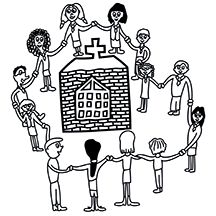OUR BLOG
Welcome to our school blog! This is where you will get a real sense of school life for our pupils at St Michael's celebrating the everyday moments that make our school such a special place to learn and grow. From class projects and school trips to creative work and community events, our posts share the joy, curiosity, and teamwork that fill our days. Whether you’re a parent, friend, or just getting to know us, we hope you enjoy seeing what our learners get up to throughout the year.
Our previous blog posts up to October half term are available here.
-
Tuesday 6 January 2026 Wednesday Dance Lunchtime Club Dancing with the Infants
-
Monday 22 December 2025 Reception Class are Musical Music in Reception
-
Friday 19 December 2025 AUTUMN TERM PROJECT ONLINE EXHIBITION 2025 At St Michael's, we aim to provide the children with the framework of knowledge to become educated citizens (cultural capital): the more children know, the easier it is for them to learn more. Home projects is one way we get the children at St Michael's to achieve this. Here are examples of the fantastic Autumn term projects.
-
Friday 19 December 2025 CAKE CREATORS CLUB After School Activity Club
-
Friday 19 December 2025 Year 5 and the Chocolate Factory Chocolate Making in Year 5
-
Thursday 18 December 2025 Art - Painting and Mixed Media Year 1 Art
-
Wednesday 17 December 2025 St Michael's Rocks! Rocksteady Band at St Michael's
-
Monday 15 December 2025 NURSERY NEWS - Autumn 2 Nursery News Update
-
Monday 15 December 2025 The Art of Decoration Year 4 Christmas Themed Art
-
Thursday 11 December 2025 The Joy of Christmas It's that wonderful time of the year again when we at St Michael's embrace the merry season of Christmas. There's something truly magical about the festive air around us, and there is a buzz of excitement. It was amazing to share the joy and warmth of this season with you at our Christmas performance.
-
Wednesday 10 December 2025 Year 3 Love the Tate This half term, Year 3 have been exploring the work of indigenous Australian artist Emily Kam Kngwarray. We were lucky enough to have the opportunity to visit the Tate Modern for an exhibition of her work, including many pieces never before shown in the UK.
-
Tuesday 2 December 2025 Pens, What Pens? No Pens Day 2025
-
Monday 1 December 2025 La Posada
-
Friday 28 November 2025 Winter Wonderland at St Michael's Friends of St Michael's
-
Friday 28 November 2025 The Terrific Twos go to the Horniman Museum Year 2 at the Horniman Museum
-
Thursday 20 November 2025 Stay and Play Autumn Reception Stay and Play
-
Thursday 20 November 2025 It's Parkour Time The Year 5 children have started their school Parkour sessions and have already started to experience joy through movement. Parkour teacher, Dr. Ovando Carter, from the London Parkour Project, demonstrated some jumps and vaults for the children which definitely had the 'wow' factor.
-
Friday 14 November 2025 Children in Need - We're There For You On Friday 14th November, St Michael's once again showed their support by giving to others; we are astounded at the generosity of our school community.
-
Monday 10 November 2025 USING OUR POWER FOR GOOD Anti-Bullying Week 2025
-
Friday 7 November 2025 Hope After Hurricane Today, the children of St Michael's lived our current value of 'Hope' by wearing the colours of Cuba, Haiti and Jamaica and bring in donations to help with a relief fund.
 St Michael's C
of E Primary School
St Michael's C
of E Primary School